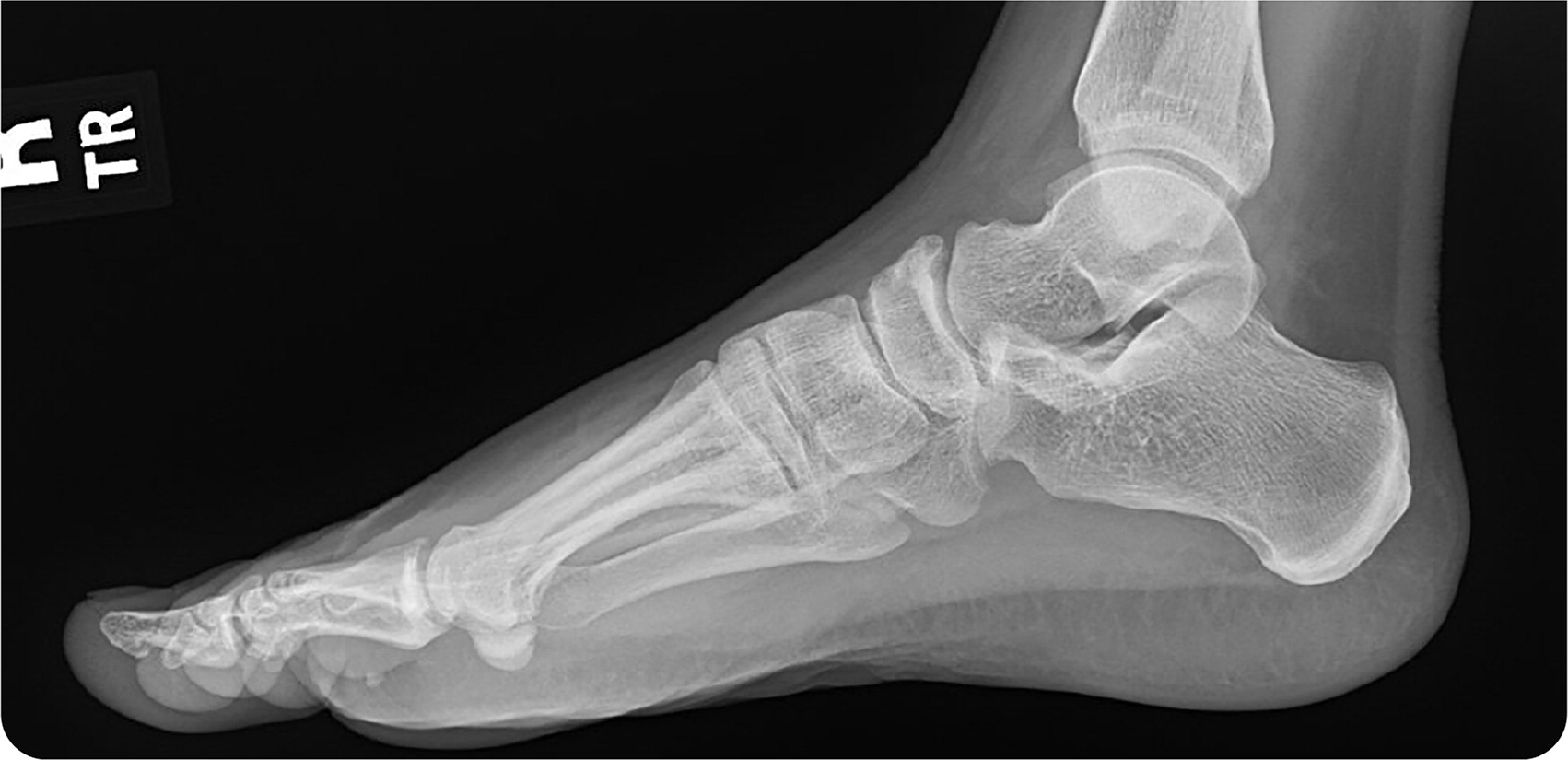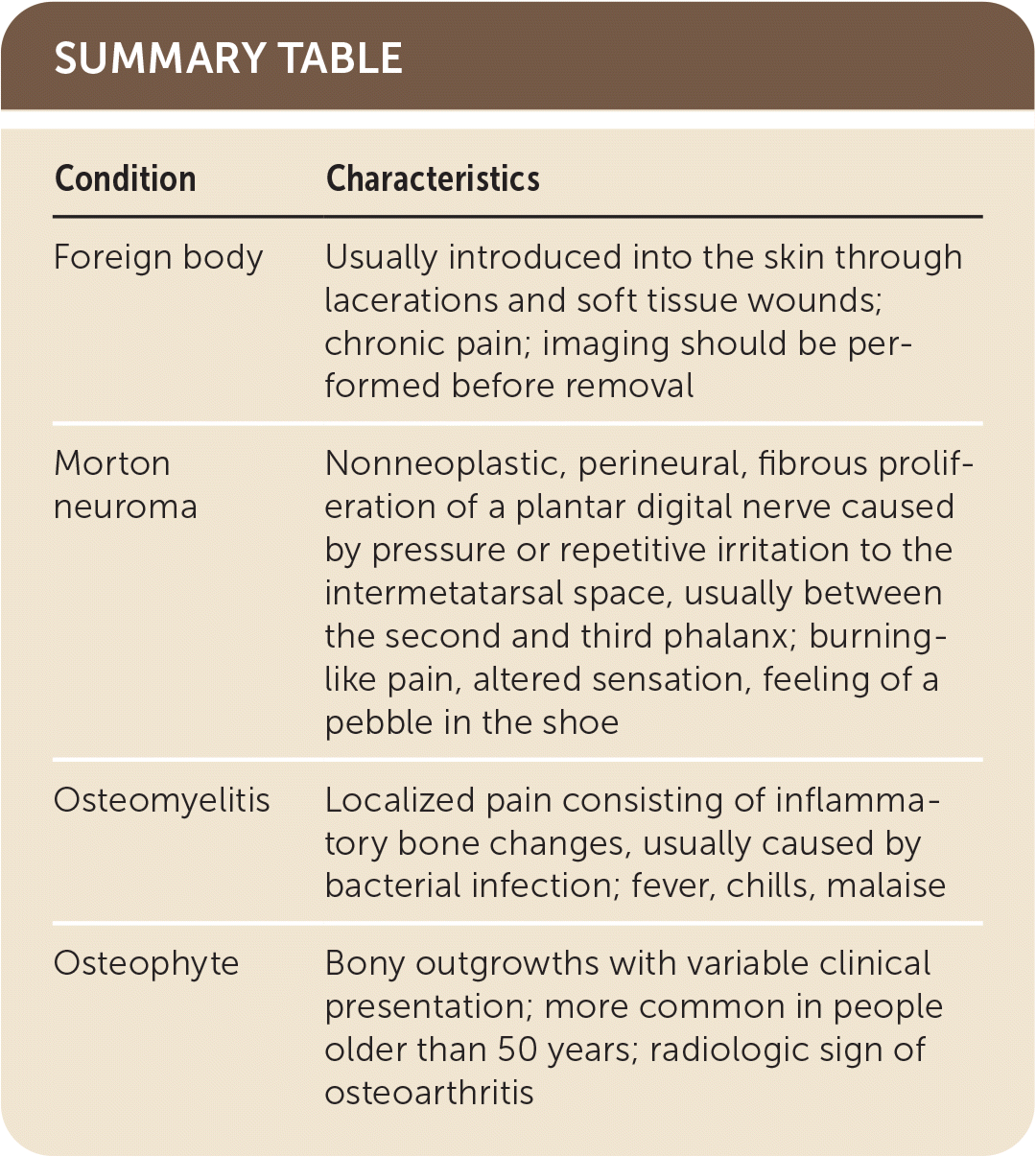
Pinpoint Foot Pain at the Base of the Phalanx
Am Fam Physician. 2022;105(6):673-674
Author disclosure: No relevant financial relationships.
A 32-year-old woman presented with a one-month history of pain in her right foot, under the fourth toe at the base of the proximal phalanx. About one month before presentation, she stepped on broken glass. She thought she removed all glass fragments at the time but noticed worsening pain since then. Walking intermittently caused sharp, localized pain. She had no additional symptoms, including fever, chills, or rash. She did not have skin changes, lumps, or discoloration in the painful area. She had no relevant family, medical, or social history.

Question
A. Foreign body.
B. Morton neuroma.
C. Osteomyelitis.
D. Osteophyte.
Discussion
The answer is A: foreign body. Most foreign bodies are introduced into the skin through lacerations and soft tissue wounds. Complications include chronic pain and neurovascular impairment. Assessment should include radiography or ultrasonography before removal.1 Contraindications for removal include the foreign body is close to a vital structure or cannot be located, or the patient is unable to tolerate removal.1

Morton neuroma is a nonneoplastic, perineural, fibrous proliferation involving a plantar digital nerve in the second or third intermetatarsal space. It is caused by pressure or repetitive irritation. The most common clinical signs are burning-like pain, altered sensation, and the feeling of a pebble in the shoe. Treatment options include orthotics, steroid injections, and surgical excision.2
Osteomyelitis is associated with inflammatory bone changes caused by pathogenic bacteria. Clinical features include fever, chills, and malaise. The most common symptom is pain at the site of infection.3 The condition is diagnosed using radiography or magnetic resonance imaging.

| Condition | Characteristics |
|---|---|
| Foreign body | Usually introduced into the skin through lacerations and soft tissue wounds; chronic pain; imaging should be performed before removal |
| Morton neuroma | Nonneoplastic, perineural, fibrous proliferation of a plantar digital nerve caused by pressure or repetitive irritation to the intermetatarsal space, usually between the second and third phalanx; burning-like pain, altered sensation, feeling of a pebble in the shoe |
| Osteomyelitis | Localized pain consisting of inflammatory bone changes, usually caused by bacterial infection; fever, chills, malaise |
| Osteophyte | Bony outgrowths with variable clinical presentation; more common in people older than 50 years; radiologic sign of osteoarthritis |

